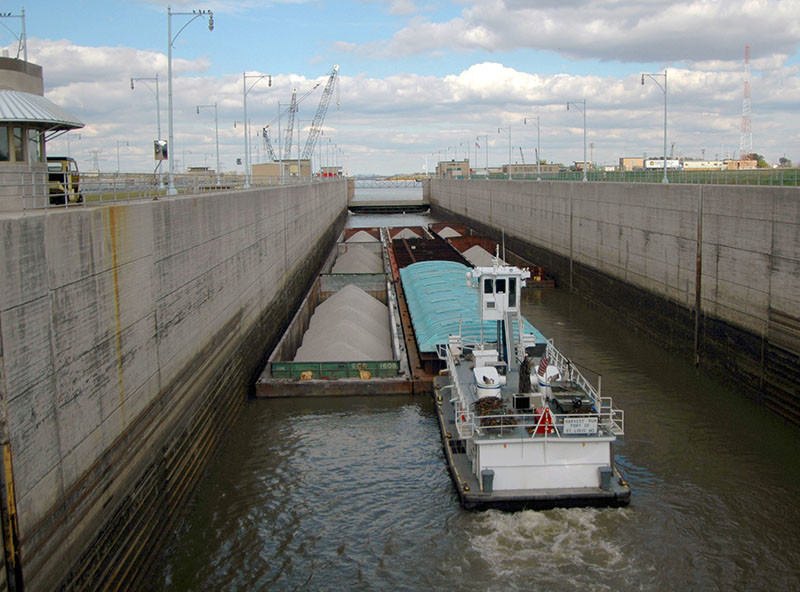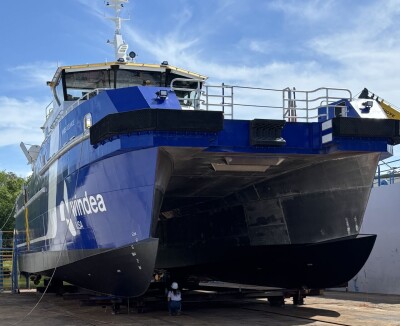Late last month, the Biden-Harris administration submitted to Congress the President’s Budget for fiscal year 2022.
Included in the budget was $6.8 billion for the Army Civil Works fiscal year 2022 budget, "the highest annual budget ever requested for the Civil Works program — focuses on investments that yield high economic and environmental returns, while increasing resiliency to climate change, promoting environmental justice and opportunity in disadvantaged communities, and supporting a strong economy by accelerating and improving the delivery of water resources products and services," said Jaime Pinkham, acting assistant secretary of the Army for Civil Works.
The budget would provide $6.8 billion in gross discretionary funding, including $5 billion from the General Fund of the Treasury, $52 million from the Inland Waterways Trust Fund (IWTF), $1.6 billion — the highest amount ever requested — from the Harbor Maintenance Trust Fund (HMTF), and an estimated $47 million from Special Recreation User Fees.
The Army Civil Works FY 2022 Budget requested the following appropriations and current estimates of additional new resources:
- Investigations $105,837,000
- Construction $1,792,378,000
- Operation and Maintenance $2,502,901,000
- Regulatory Program $204,400,000
- Mississippi River and Tributaries (MR&T) $269,688,000
- Expenses $199,290,000
- Flood Control and Coastal Emergencies $35,000,000
- Assistant Secretary of the Army for Civil Works $5,000,000
- IWTF $52,150,000
- HMTF $1,625,856,000
- TOTAL $6,792,500,000
The budget makes important investments, including proposals to:
- Facilitate safe, Reliable and Sustainable Commercial Navigation. The budget includes $3.4 billion for the study, design, construction, operation and maintenance of inland and coastal navigation projects. These significant investments will facilitate safe, reliable, and environmentally sustainable commercial navigation at our nation’s coastal ports and inland waterways. Approximately $52.2 million will be provided from the IWTF, and $1.6 billion from the HMTF, which the budget proposes to execute within the trust fund accounts rather than to transfer and execute them from the other appropriations accounts. The American Jobs Plan also includes $8 billion to improve the nation’s ports and waterways through the Corps program.
- Reduce the Risks associated with Riverine and Coastal flooding, and Increase the Resilience of Local Communities. The Flood Risk Management program is funded at $1.7 billion in the FY 2022 Budget. The program is a collaborative effort that integrates the flood risk management projects, programs, and authorities of the Corps of Engineers with those of other federal agencies, state, regional and local agencies.
- Restore Aquatic Habitat where the Aquatic Ecosystem Structure, Function and Processes have Degraded. The FY 2022 Aquatic Ecosystem Restoration program is funded at $501 million in the budget. The Corps will continue to work with other federal, state and local agencies, using the best available science and adaptive management to restore degraded ecosystem structure, function, and/or process to a more natural condition. The Budget includes $350 million for the South Florida Ecosystem Restoration (SFER) (Everglades) program, a $100 million, or 40%, increase from the FY 2021 enacted level. SFER funding is also included in the American Jobs Plan. Taken together, a robust amount of funding is proposed for SFER, enabling significant progress on ecosystem restoration.
- Protect the Nation’s Waters and Wetlands and Provide Efficiency in Permit Processing. The FY 2022 Regulatory Program is funded at $204 million in the budget.
- Support emergency management. The USACE Emergency Management program is funded at $41 million in FY 2022, with $6 million in the O&M account and $35 million in the Flood Control Coastal Emergency account – for preparedness and training to respond to floods, hurricanes, and other natural disasters.
- Increase Resiliency to Climate Change. The budget invests in improving the Nation’s water infrastructure, while incorporating climate resilience efforts into the Corps’ commercial navigation, flood and storm damage reduction, and aquatic ecosystem restoration work. It invests in programs that will help local communities identify and address their risks associated with climate change and improve the resilience of Corps infrastructure to climate change, including taking climate resilience into account when selecting projects.
- Support a Strong Economy by Accelerating and Improving the Delivery of Water Resources Projects. The budget supports Corps efforts to accelerate and improve the delivery of water resources projects through greater non-Federal participation, and by removing barriers that prevent State, local, and private parties from moving forward with investments that they deem priorities. The FY 2022 budget proposes $10 million for a new Innovative Funding Partnership program, which supports Corps efforts to accelerate and improve the delivery of water through greater non-federal participation, and by removing barriers that prevent state, local, and private parties from moving forward with investments that they deem priorities.
The budget includes seven previously unfunded programs and projects within the Investigations account and four within the Construction account:
- Investigations — Central and South Florida (C&SF) Flood Resiliency (Section 216) Study, FL (Flood and Storm Damage Reduction); Boise River, Garden City, Ada County, ID (Flood and Storm Damage Reduction); Great Lakes Coastal Resiliency Study, IL, IN, MI, MN, OH, PA, NY and WI (Flood and Storm Damage Reduction); Spring Creek South, Jamaica Bay (Howard Beach), Queens, NY (Aquatic Ecosystem Restoration/Flood and Storm Damage Reduction); Little Narragansett Bay, RI (Coastal Navigation); Waccamaw River, Horry County, SC (Flood and Storm Damage Reduction) (Flood and Storm Damage Reduction); and Little Goose Creek, Sheridan, WY (Aquatic Ecosystem Restoration).
- Construction — McClellan-Kerr Arkansas River Navigation System, Three Rivers, AR (Inland Navigation); West Sacramento, CA (Flood and Storm Damage Reduction); Anacostia Watershed Restoration, Prince George’s County, MD (Aquatic Ecosystem Restoration); and Norfolk Harbor and Channels, VA (Deepening) (Coastal Navigation).





